The Hidden Wonders of Yungang Grottoes: A Traveler’s Guide to China’s Ancient Caves
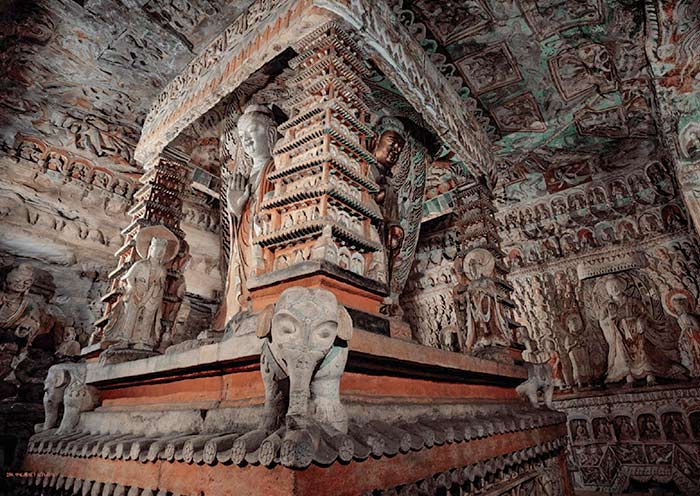
An Essential Guide to Visiting Yungang Grottoes
In This Guide
- An Essential Guide to Visiting Yungang Grottoes
- The Rich History and Legends of Yungang Grottoes
- Main Highlights: What You Absolutely Can’t Miss
- Planning Your Visit: A Practical Guide
- Tickets: Prices, Booking, and Tips
- How to Get There: A Complete Transportation Guide
- Local Cuisine and Accommodation Nearby
- Frequently Asked Questions
- Final Thoughts on Your Trip
Discover the Majestic Yungang Grottoes
Nestled at the foot of the Wuzhou Mountain, about 17 kilometers west of Datong in Shanxi Province, the Yungang Grottoes (云冈石窟) stand as one of China’s most spectacular achievements in ancient art and architecture. Carved over 1,600 years ago during the Northern Wei Dynasty, these remarkable stone temples reflect the profound spirituality and artistic innovation of their time. With 45 major caves, 252 smaller niches, and over 59,000 exquisite statues, they are not just a feast for the eyes but a journey through history, culture, and faith.
The grottoes serve as a testament to the cultural exchange between China and the world, showcasing influences from Indian, Central Asian, and even Greco-Roman artistic traditions. Each cave tells a unique story through its intricate carvings and monumental sculptures, inviting visitors to explore the evolution of Buddhist art.

Yungang Grottoes.
Whether you are a history enthusiast, an art lover, or simply someone seeking to experience the spiritual essence of ancient China, a visit to the Yungang Grottoes promises an enriching adventure. Immerse yourself in the serenity of these carved wonders, where the echoes of the past resonate with every step you take.
Prepare to be captivated by the artistry, the history, and the sheer scale of this UNESCO World Heritage site—a true gem in the heart of China.

Yungang Grottoes.
The Rich History and Legends of Yungang Grottoes
The Yungang Grottoes, a UNESCO World Heritage Site, stand as a testament to the rich tapestry of Chinese history and artistry. Carved into the cliffs of Wuzhou Mountain, these remarkable caves not only showcase exquisite stone sculptures but also tell the story of the cultural and spiritual journey that shaped them.
A Glimpse into History
Construction of the Yungang Grottoes began in 398 AD during the Northern Wei Dynasty, under the auspices of Emperor Wencheng. This monumental project was entrusted to the monk Seng Tanyao, who played a pivotal role in establishing Buddhism as a dominant cultural force in the region. Over the span of 150 years, artisans painstakingly sculpted 45 major caves, alongside 252 smaller niches and more than 59,000 statues. These intricate carvings reflect the artistry and craftsmanship of the time, merging influences from India, Central Asia, and even the Greco-Roman world.
Artistic Evolution
The Yungang Grottoes represent a significant evolution in Buddhist art, marking a shift from simpler representations to more complex and emotive forms. The statues are characterized by their flowing garments, detailed facial expressions, and intricate halos, all of which convey profound spiritual narratives. This artistic journey began in India, traveled through the Kizil Grottoes in Xinjiang, and culminated in the masterpieces found at Yungang. The site served as a precursor to the renowned Longmen Grottoes, further solidifying its importance in the annals of Buddhist art.
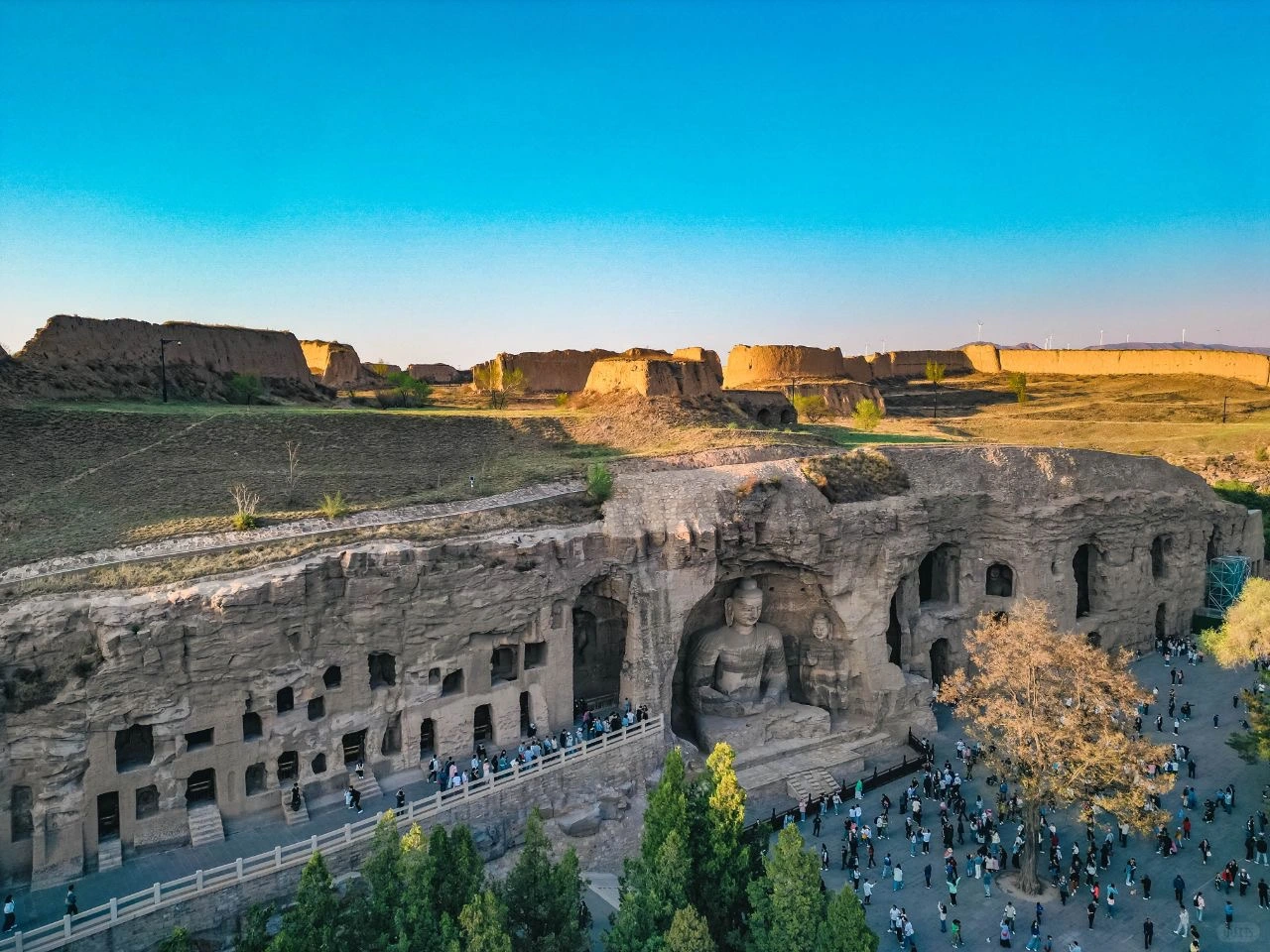
Yungang Grottoes.
Legends and Cultural Significance
Legend has it that the caves were carved not just as a means of artistic expression, but as a manifestation of divine inspiration. Local lore suggests that the spirits of ancient artisans guided the hands of the craftsmen, making the sculptures not merely objects of beauty but vessels of spiritual significance. These caves became a sanctuary for Buddhist monks and pilgrims, who sought solace and enlightenment among the towering statues of the Buddha.
The Yungang Grottoes also symbolize the Northern Wei Dynasty’s ambition to unify diverse cultures under a single religious framework. As Emperor Tuoba Gui moved the capital to Datong, he envisioned the grottoes as a bridge between the old and new capitals, infusing the region with a sacred air that would attract followers from across the empire. This blend of cultural influences is evident in the architectural features of the caves, showcasing a harmonious fusion of styles that reflect the dynasty’s global aspirations.
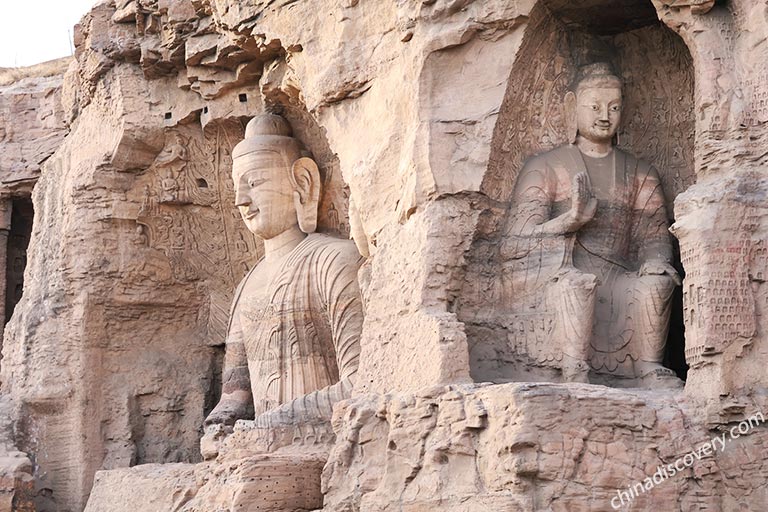
Yungang Grottoes.
The Legacy Endures
Today, the Yungang Grottoes stand as a monument to the faith, artistry, and historical significance of Buddhist culture in China. Visitors are often struck by the sheer scale and beauty of the carvings, particularly notable in Cave 5, which houses the tallest Buddha statue in the complex, soaring an impressive 70 feet. Each cave tells its own story, with unique features that draw in travelers seeking to connect with history and spirituality.
As you wander through this ancient site, you are not just observing art; you are stepping into a narrative that spans centuries, rich with legends, cultural exchanges, and the enduring quest for enlightenment. The Yungang Grottoes are more than a visual feast; they are a profound chapter in the book of human history, inviting visitors from around the world to explore their depths and discover the stories etched in stone.
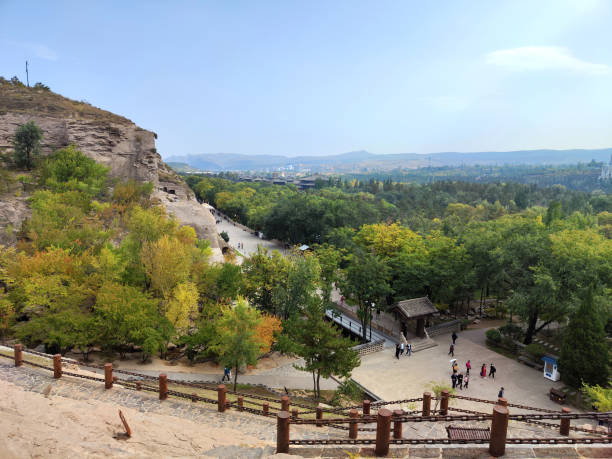
Yungang Grottoes.
Main Highlights: What You Absolutely Can’t Miss
Discover the Unmissable Highlights of Yungang Grottoes
Visiting the Yungang Grottoes is akin to stepping into a living museum of ancient Buddhist art and history. As you wander through this UNESCO World Heritage site, you’ll encounter breathtaking sculptures, intricate carvings, and a rich tapestry of cultural influences that span centuries. Here’s a detailed guide to ensure you don’t miss the most captivating aspects of this extraordinary site.
1. Architectural Marvels: Types of Caves
The Yungang Grottoes feature a variety of cave types, each showcasing unique architectural and artistic styles:
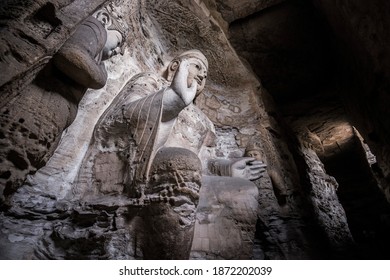
Yungang Grottoes.
- Pagoda Temples: Characterized by a central pillar representing the Buddha, visitors walk around it in a clockwise direction, absorbing the atmosphere of devotion.
- Large Statue Caves: These grand spaces are filled with colossal Buddha statues, surrounded by smaller figures of disciples and bodhisattvas.
- Buddha Hall Caves: Typically featuring two interconnected chambers, these caves are symmetrically designed, providing a harmonious space for reflection and worship.
2. Must-See Caves
While all caves at Yungang are remarkable, a few stand out for their size, artistry, and historical significance:
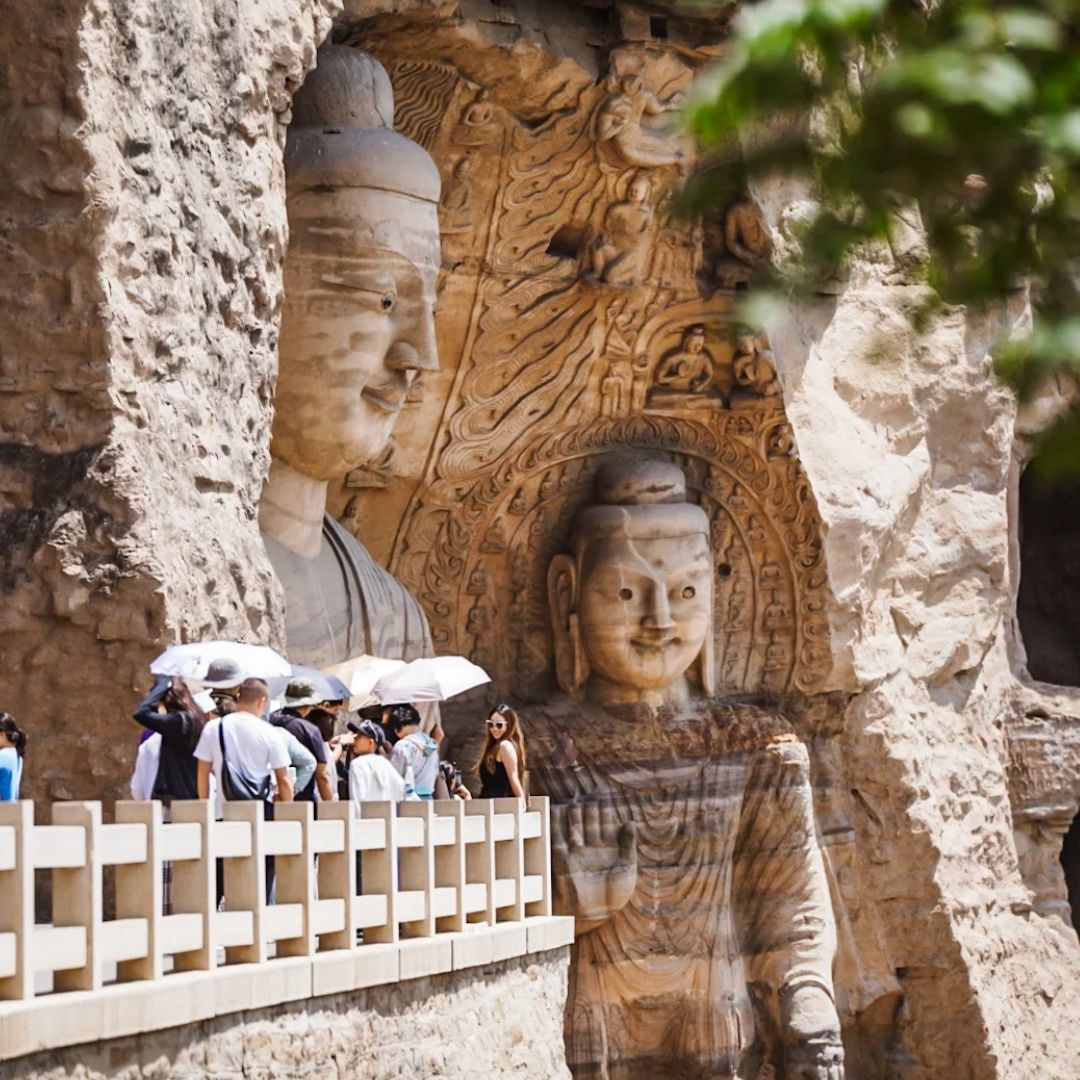
Yungang Grottoes.
- Cave 5: Home to the tallest Buddha statue in Yungang, soaring impressively at 70 feet. This monumental figure is a spectacular sight and a highlight for many visitors.
- Cave 6: Dedicated to Shakyamuni Buddha, this cave exemplifies exquisite artistry, showcasing detailed carvings that speak to the skill of ancient craftsmen.
- Cave 12: Known as the “Music Cave,” it features unique acoustic properties and carvings related to music, enhancing the spiritual ambiance of the grottoes.
- Cave 20: This cave is notable for its massive outdoor Buddha statue, offering a striking view that connects art with nature.
3. The Artistic Journey
The Yungang Grottoes are the culmination of centuries of artistic evolution. They represent a significant transition in Buddhist art, influenced by styles from India and Central Asia before developing their own distinct flavor in China. Understanding this journey enriches your visit as you appreciate the intricate details and the blend of cultural influences in the carvings.
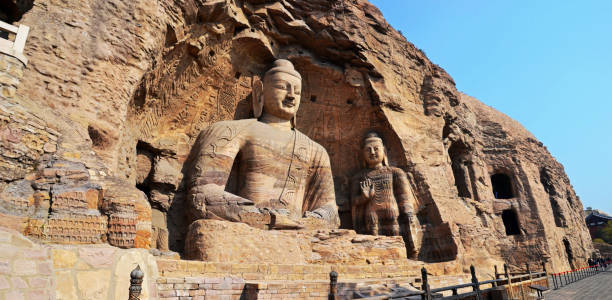
Yungang Grottoes.
4. Historical Significance
Constructed between 398 and 525 AD during the Northern Wei Dynasty, the Yungang Grottoes were commissioned by Emperor Wencheng. The site became a spiritual and cultural hub, bridging the ancient capital of Datong and the later capital in Luoyang. This historical context adds depth to your experience, allowing you to reflect on the grand ambitions of a bygone era.
5. Visitor Experience
To maximize your time at Yungang, consider the following tips:
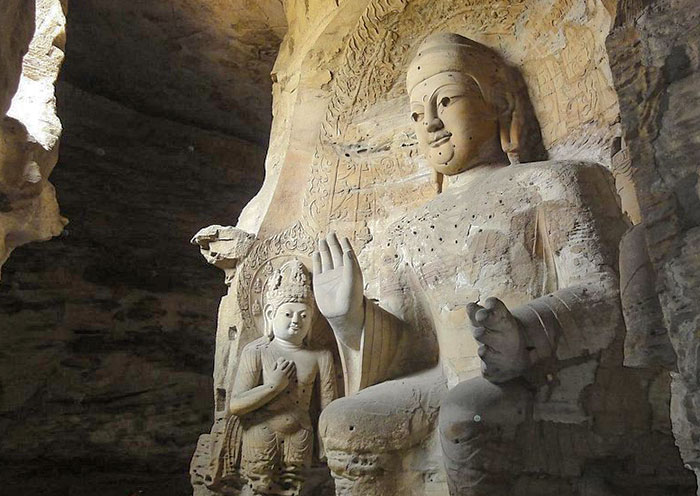
Yungang Grottoes.
- Best Times to Visit: Arrive early in the morning to avoid crowds and enjoy tranquil moments with the sculptures. Alternatively, visiting in the afternoon allows for a relaxed exploration of the caves.
- Recommended Duration: Set aside at least 2 to 3 hours to fully appreciate the artistry and history of the grottoes.
- Guided Tours: Opt for a guided tour to gain deeper insights into the meanings behind the carvings and the historical significance of each cave.
6. Nearby Attractions
After exploring the Yungang Grottoes, consider visiting nearby cultural sites to deepen your understanding of the region’s heritage:
- Huayan Monastery: An impressive Buddhist temple complex known for its beautiful frescoes and serene atmosphere.
- Nine Dragon Wall: A stunning example of Ming Dynasty architecture, this glazed wall features intricately designed dragon reliefs, symbolizing power and protection.
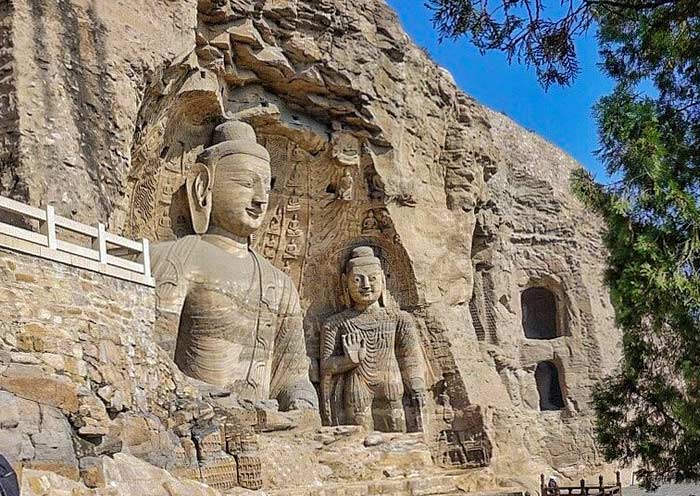
Yungang Grottoes.
Final Thoughts
The Yungang Grottoes offer an unforgettable glimpse into the heart of ancient Chinese culture and Buddhist artistry. Each cave, sculpture, and carving tells a story, inviting you to pause and reflect on the rich tapestry of history that surrounds you. Don’t miss this extraordinary opportunity to witness one of China’s greatest treasures!
Planning Your Visit: A Practical Guide
When planning your visit to the Yungang Grottoes, prepare for an unforgettable journey through ancient history and exquisite artistry. Nestled near Datong in Shanxi Province, these UNESCO World Heritage-listed caves offer a glimpse into the monumental stone-carving project initiated over 1,600 years ago. Follow this guide to ensure a fulfilling visit filled with cultural discovery.

Yungang Grottoes.
Getting There
Location:
The Yungang Grottoes are approximately 17 kilometers west of Datong, making them easily accessible by various modes of transport.
By Bus
- Bus Line 3:
- Departure: From the West Gate of Datong Ancient City (Bus Company No. 4 Station)
- Schedule: 5:30 AM to 7:30 PM daily
- Cost: 1 RMB one-way, 2 RMB round-trip
- Travel Time: About 30 minutes
- Stop: Yungang Station, right at the grotto entrance
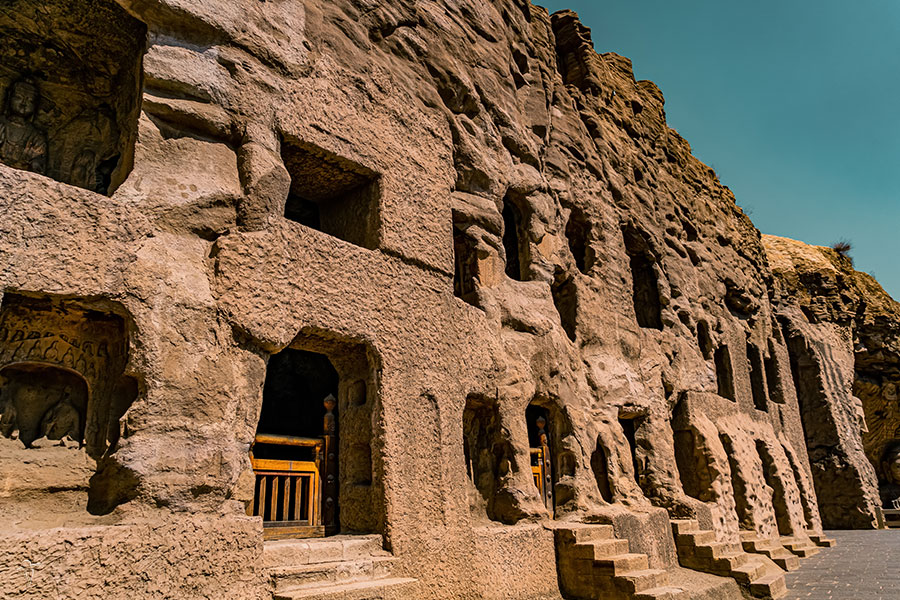
Yungang Grottoes.
By Taxi
- Cost: 30–50 RMB
- Duration: Approximately 30 minutes
- Tip: Aim to leave by 8:00 AM to beat the crowds!
Private Driver
- Ideal for those looking to visit multiple sites in one day. A private driver offers flexibility, comfort, and local insights.
Opening Hours and Tickets
- Opening Hours: 9:00 AM to 5:00 PM (last ticket sale at 4:30 PM)
- Ticket Prices:
- Peak Season (April 1 – October 31): 120 RMB
- Recommended Visit Duration: 2 to 3 hours
Best Time to Visit
To fully appreciate the Yungang Grottoes, consider these visiting strategies:
-
Morning Visit:
Arrive early to enjoy fewer crowds. Start at Cave 45 and work your way toward Cave 1. -
Afternoon Visit:
If you prefer a relaxed schedule, begin at Cave 45, then move to Cave 21 and continue exploring as crowds thin. -
Alternative Timing:
Follow the standard route from Tan Yao Square, through Buddha Avenue, and visit Lingyan Temple along the way.
Pro Tip: Early visits provide the best photo opportunities and a more serene experience.
Exploring the Grottoes
Once you arrive, navigating the grottoes is an adventure in itself. Here are key highlights to look out for:
- Cave 3: The largest room in the grotto complex.
- Cave 5: Home to the tallest Buddha statue at Yungang.
- Cave 6: Dedicated to Shakyamuni Buddha.
- Cave 7: Notable for its unique two-room setup.
- Cave 12: Often referred to as the “music cave” for its distinct features.
- Cave 20: Features a monumental Buddha statue visible from outside.
Nearby Attractions
Enhance your visit by exploring these nearby sites:
- Huayan Monastery: An ancient Buddhist temple complex renowned for its stunning architecture and serene atmosphere.
- Nine Dragon Wall: A magnificent glazed screen wall adorned with colorful dragon reliefs, showcasing the region’s historical artistry.
Final Tips
- Photography: Arrive early for the best light and fewer people in your shots.
- Cultural Respect: As a site of religious significance, maintain decorum while exploring.
- Stay Hydrated: Bring water, especially in warmer months, as you navigate the expansive grottoes.
With this guide in hand, you’re ready to embark on an enriching journey through the Yungang Grottoes, where history and artistry converge in breathtaking fashion. Enjoy your visit!
Tickets: Prices, Booking, and Tips
Visiting the Yungang Grottoes: Essential Ticket Information
Exploring the majestic Yungang Grottoes is an unforgettable journey into ancient artistry and Buddhist history. To ensure a seamless visit, here’s everything you need to know about ticket prices, booking options, and tips for your adventure.
Ticket Prices
- Peak Season (April 1 – October 31): 120 RMB
- Off-Peak Season (November 1 – March 31): Reduced prices may apply; check local listings for updates.
Tickets grant you access to all the grottoes and their stunning carvings, making it an excellent value for history and culture enthusiasts.
Opening Hours
- Daily: 9:00 AM to 5:00 PM
(Note: Ticket sales end at 4:30 PM)
Booking Tickets
While you can purchase tickets on-site, consider the following options for a smoother experience:
-
On-Site Purchase: Simply buy your ticket at the entrance. Arriving early is recommended to avoid long lines, especially during peak tourist seasons.
-
Online Booking: Some travel platforms may offer the option to book tickets in advance. This can save you time and ensure you secure your visit, particularly during busy periods.
-
Tour Packages: If you prefer a guided experience, various local tour operators provide packages that include transportation and a knowledgeable guide, giving you deeper insights into the history behind the grottoes.
Transportation Tips
Getting to the Yungang Grottoes is easy, with several transportation options available:
-
Bus: Take Bus Line 3 directly to Yungang Station. This service operates from 5:30 AM to 7:30 PM and costs only 1 RMB one-way.
-
Taxi: A taxi ride from Datong city center takes about 30 minutes and costs between 30–50 RMB. It’s fast and convenient, especially if you’re travelling in a group.
-
Private Driver: For those looking for flexibility and comfort, hiring a private driver is a great choice. This option allows you to explore at your own pace and visit nearby attractions without the hassle of public transport.
Pro Tips for a Memorable Visit
-
Best Time to Visit: Aim for an early morning visit. Arriving before 9:00 AM allows you to enjoy the grottoes with fewer crowds and better photo opportunities.
-
Recommended Duration: Plan to spend 2 to 3 hours exploring the grottoes to fully appreciate the artistry and history.
-
Explore Nearby Attractions: Consider visiting the Huayan Monastery and the Nine Dragon Wall to enrich your cultural experience in Datong.
By keeping these ticketing details and tips in mind, you can ensure a smooth and enjoyable visit to the Yungang Grottoes, where ancient artistry and cultural heritage await!
How to Get There: A Complete Transportation Guide
Getting to the Yungang Grottoes: Your Comprehensive Transportation Guide
Visiting the Yungang Grottoes is an unforgettable journey through history, art, and spirituality. To make the most of your trip, it’s essential to know how to get there efficiently. Below, you’ll find detailed information on various transportation options available for international travelers visiting this UNESCO World Heritage Site.
Location Overview
The Yungang Grottoes are situated about 17 kilometers west of Datong in Shanxi Province. The site is easily accessible via multiple modes of transportation, making it convenient for visitors.
Public Transport Options
1. Bus Services
Direct Bus from Datong City:
– Bus Line: Line 3
– Departure Point: Bus Company No. 4 Station at the West Gate of Datong Ancient City, Zhenhua Road.
– Travel Time: Approximately 30-40 minutes.
– Cost: 1 RMB one-way; 2 RMB round-trip.
– Schedule: Buses run from 5:30 AM to 7:30 PM daily, with frequent departures.
– Alighting Station: Yungang Station (final stop).
Tips for Bus Travelers:
– Payment via Alipay is accepted, so you won’t need cash.
– Arrive early to secure a good seat and enjoy a quieter journey to the grottoes.
– If you’re traveling from Datong South Station, take Bus Line 68 to reach Bus Company No. 4 Station.
2. Taxi Services
Taxi from Datong:
– Travel Time: Approximately 30 minutes.
– Cost: Ranges from 30 to 50 RMB.
– Convenience: Taxis offer a direct and quick route, especially if you prefer a more personalized travel experience.
Pro Tips for Taxi Users:
– Depart early (around 8:00 AM) to avoid crowds.
– Verify the route with your driver to prevent unnecessary detours that could extend your travel time.
Private Transportation
3. Hiring a Private Driver
For those looking for a flexible and hassle-free option, hiring a private driver is a fantastic choice:
– Cost-effective: Fixed rates make budgeting straightforward.
– Time-efficient: Direct rides between attractions save time and energy.
– Tailored Experience: Spend as long as you wish at each site, and explore off-the-beaten-path locations with your driver’s local insights.
Recommendation: If you plan to visit other attractions, such as the Hanging Temple, consider a full-day hire for ease and comfort.
Nearby Attractions to Explore
The Yungang Grottoes are part of a rich tapestry of cultural heritage in the Datong area. Make sure to consider these nearby sites as part of your travel itinerary:
- Huayan Monastery: A stunning Buddhist temple complex known for its impressive architecture and serene atmosphere.
- Nine Dragon Wall: An ornate glazed wall featuring intricate dragon reliefs, a testament to the artistry of the Ming Dynasty.
Conclusion
Getting to the Yungang Grottoes is straightforward, thanks to the variety of transportation options available. Whether you opt for public buses, taxis, or a private driver, you’ll find that reaching this incredible site is both convenient and enjoyable. Plan your visit wisely, and prepare to immerse yourself in one of China’s most significant historical treasures!
Local Cuisine and Accommodation Nearby
Savoring Flavors and Finding Comfort Near Yungang Grottoes
After immersing yourself in the captivating artistry of the Yungang Grottoes, it’s the perfect time to indulge in local flavors and find a cozy place to rest. The Datong region offers a delightful array of culinary experiences and accommodations that complement your historical journey.
Local Cuisine
When it comes to food, Datong has unique offerings that reflect the region’s rich cultural tapestry. Here are some must-try dishes and local eateries:
-
Shanxi Noodles (刀削面): Known for their hand-shaved texture, these noodles are a local staple. Try them at Datong Noodle House, where they serve them in a savory broth with various toppings.
-
Sliced Lamb (羊肉切片): This dish features tender slices of lamb, often served with a spicy dipping sauce. Head to Lamb Hot Pot Restaurant for a warm and hearty meal.
-
Fried Cake with Green Onions (葱花饼): Crispy on the outside and soft on the inside, these savory pancakes are perfect for a quick snack. You can find them at street stalls throughout the city, particularly near the Datong Ancient City Wall.
-
Datong Tofu (大同豆腐): This locally produced tofu has a unique flavor and texture, making it a great addition to any meal. Try it at Old Tofu Restaurant, where it’s prepared in various traditional ways.
-
Sweet Fermented Rice (酒酿): For dessert, don’t miss this sweet and slightly alcoholic dish. It’s a delightful way to end your meal and can be found in many local eateries.
Accommodations
After a day of exploration, you’ll want a comfortable place to unwind. Here are some accommodations that provide both convenience and comfort near the Yungang Grottoes:
-
Yungang International Hotel: This hotel combines modern amenities with traditional Chinese decor. Located just a short drive from the grottoes, it offers spacious rooms, an on-site restaurant, and a relaxing atmosphere.
-
Datong Grand Hotel: Situated in the city center, this hotel provides easy access to various attractions, including the Yungang Grottoes. Guests can enjoy comfortable rooms, free Wi-Fi, and a restaurant serving both local and international cuisine.
-
Tianhe Hotel: A budget-friendly option, Tianhe Hotel offers clean, simple rooms and is conveniently located near the bus station for easy access to the grottoes. The staff is friendly, and the hotel has a cozy ambiance.
-
Jinjiang Inn Datong Yungang: Known for its reliability and comfort, this hotel features well-appointed rooms and an on-site dining option. It’s an excellent choice for travelers seeking affordability without compromising quality.
-
Huayan International Hotel: Close to the Huayan Monastery, this hotel is perfect for those wanting to explore more of Datong’s historical sites. It offers modern facilities, a restaurant, and a peaceful garden area to unwind after a busy day.
These local dining and accommodation options ensure that your visit to the Yungang Grottoes is not only a feast for the eyes but also a delight for the palate and a comfortable experience overall. Enjoy your journey through history and culture!
Frequently Asked Questions
Frequently Asked Questions about Yungang Grottoes
1. What are the Yungang Grottoes?
The Yungang Grottoes, located near Datong in Shanxi Province, are a UNESCO World Heritage site known for their stunning stone carvings and intricate Buddhist sculptures. Dating back to the Northern Wei Dynasty (398-525 AD), they consist of 45 major caves and over 59,000 statues, showcasing a remarkable blend of artistic styles influenced by various cultures, including Indian and Central Asian.
2. How do I get to the Yungang Grottoes?
You can reach the Yungang Grottoes by several means:
– Bus: Take Bus Line 3 from the Datong Ancient City, which operates from 5:30 AM to 7:30 PM.
– Taxi: A taxi ride from Datong takes about 30 minutes and costs around 30-50 RMB.
– Private Driver: Hiring a private driver is a convenient option if you wish to explore nearby attractions as well.
3. What are the opening hours and ticket prices?
The Yungang Grottoes are open daily from 9:00 AM to 5:00 PM, with the last ticket sales at 4:30 PM. Ticket prices vary by season:
– Peak Season (April 1 – October 31): 120 RMB
– Off-Peak Season: Prices may vary, so check in advance.
4. How long should I plan to spend at the Yungang Grottoes?
A visit typically lasts 2 to 3 hours, allowing ample time to explore the major caves and appreciate the intricate carvings. If you plan to visit nearby attractions, consider allocating more time for a fuller experience.
5. What is the best time to visit the Yungang Grottoes?
For the most enjoyable experience, consider visiting in the morning to avoid crowds. Arriving early allows you to start at Cave 45 and work your way towards Cave 1, providing better photo opportunities and a more tranquil atmosphere.
6. Are there any notable caves to focus on during my visit?
Certainly! Some of the most fascinating caves include:
– Cave 5: Home to the tallest Buddha statue at Yungang.
– Cave 6: Dedicated to Shakyamuni Buddha.
– Cave 20: Features a massive outdoor Buddha statue.
Each cave offers unique artistry and rich historical significance.
7. Are there any facilities available at the Yungang Grottoes?
Yes, there are visitor facilities, including restrooms and a gift shop. Additionally, guided tours may be available, which can enhance your understanding of the site’s historical and cultural context.
8. What other attractions are nearby the Yungang Grottoes?
While visiting Yungang, consider exploring:
– Huayan Monastery: An ancient Buddhist temple complex known for its beautiful frescoes and tranquil atmosphere.
– Nine Dragon Wall: A stunning glazed screen wall adorned with intricate dragon reliefs, showcasing the region’s artistic heritage.
These attractions provide a deeper insight into the rich cultural tapestry of the Datong area, making for a well-rounded visit.
Final Thoughts on Your Trip
As you prepare to conclude your journey through the awe-inspiring Yungang Grottoes, take a moment to reflect on the profound experience you’ve just had. These ancient stone carvings stand not only as a testament to the artistry of the Northern Wei Dynasty but also as symbols of faith, cultural exchange, and the enduring legacy of Buddhism in China.
Embrace the Legacy
Your visit to the Yungang Grottoes is more than just an exploration of intricate sculptures; it is a step back in time to witness the fusion of diverse artistic influences that shaped these incredible caves. Each cave tells a story, from the towering statues of Buddha to the delicate details that invite contemplation and admiration. The artistic journey that began over 1,600 years ago continues to resonate today, reminding us of the universal themes of spirituality and creativity that connect us across cultures and generations.
Explore Beyond the Grottoes
While the Yungang Grottoes are undoubtedly a highlight, don’t miss the chance to discover the surrounding treasures of Datong. The serene Huayan Monastery and the magnificent Nine Dragon Wall offer further insights into the region’s rich history and artistic heritage. Together, these sites create a tapestry of cultural significance that enriches your understanding of China’s profound legacy.
Cherish the Moments
As you conclude your adventure, let the serene beauty of the Yungang Grottoes linger in your memory. Whether it’s the feeling of standing before a colossal Buddha, the intricate carvings that evoke emotions, or the stories shared with fellow travelers, these moments are what make your journey truly special.
A Call to Return
The Yungang Grottoes are not just a destination; they are an invitation to continue exploring the wonders of Chinese history and culture. Each return visit may unveil new insights and perspectives, deepening your appreciation for this monumental site and the stories it holds.
As you leave, carry with you the spirit of Yungang—a place where art, faith, and history converge—and let it inspire your future travels. Safe journeys!